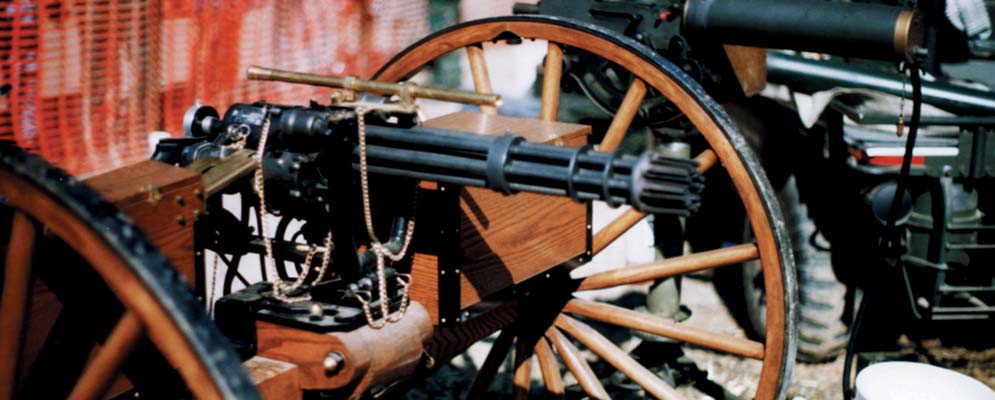By Rick Cartledge
I first met Rich Pugsley at Knob Creek Range in 1989. Kenny Sumner had recently built the pole barn, but hadn’t added the extensions that are present now. In the middle of the barn, I caught a glimpse of deep blue steel, the rich hue of hickory and ash, and everywhere the glimmer of polished brass. I knew that I beheld the work of a dedicated craftsman. I went to investigate. Rich Pugsley introduced himself. Rich then showed me around the 1874 45-70 Gatling gun on full combat chassis that the had just built. Beside it rested a half scale 9mm Gatling on a naval mount. The 9mm gun sported a proportioned 9 mm Accles drum. Beside the Navy Gatling rested two 9mm Accles drum cases built of fine wood with authentic strapping.
Rich then told me the story of how his guns came to be. He reached under his display table and came up with an Accles drum in 45-70. Rich then hauled out his photograph album. It held numerous pictures of the Gatling gun company that he had just bought. Rich stated that he had to bet his money and his skilled hands that he could succeed. Rich didn’t blink. He bought the company and moved to Nebraska. In the freedom of that western state, Rich Pugsley still operates The Thunder Valley Gatling Gun Company, a Class 2 manufacturer and maker of Richard Gatling’s guns. Rich did so for two reasons. First, he remained confident that he would succeed. Second, and more importantly, he passionately wanted to recreate the guns of Dr. Richard Gatling. For his craftsmanship and knowledge, and for these two reasons, Rich Pugsley is my kind of gunman.
The Doctor Operates
Richard Jordan Gatling came to earth in 1818. Before he left this earth in 1903, Mr. Gatling had invented agricultural machinery, become a medical doctor, and invented the gun that bears his name. Herein we concern ourselves with the latter two of Dr. Gatling’s accomplishments. Richard Gatling entered the medical profession in the belief that he could help relieve human suffering. He brought this heartfelt belief to the invention of his gun. He perceived that he could build a gun so terrible that men would know of it and never again go to war. He did invent and build the gun that bears his name. He produced it for many years. As the reader knows, mankind accepted Richard Gatling’s gun but ignored his lofty perception.
After some hits and misses, Richard Gatling patented his gun in 1862. Though available at that point, the Gatling gun saw very limited use in the War Between The States. In the post war Navy, and in the adventuresome west, the Gatling gun came into its own. Rich Pugsley builds a full-sized replica of the 1874 model Gatling gun in 45-70. This gun employs the standard rifle cartridge of the day. In combat, the Army used the gun as a field piece. Each gun carried a complement of eighteen men. Additionally, each gun carried both a limber and a caisson.
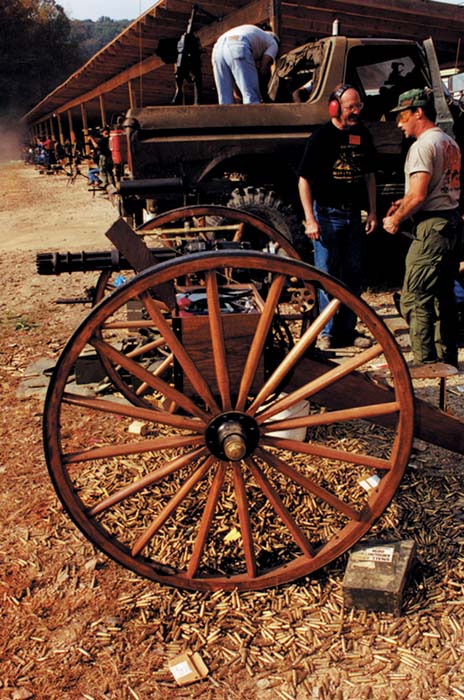
In 1876 General George Armstrong Custer made one of his worst career moves. He failed to take his Gatling guns. George Custer thought that the Gatling guns might slow him down. Among other quarry, The General hunted the Souix and Cheyenne on The Greasy Grass. Unfortunately, on June 25, 1876, he found them. Though the resulting mortal combat may have been Custer’s last one, it wasn’t much of a “ stand.”
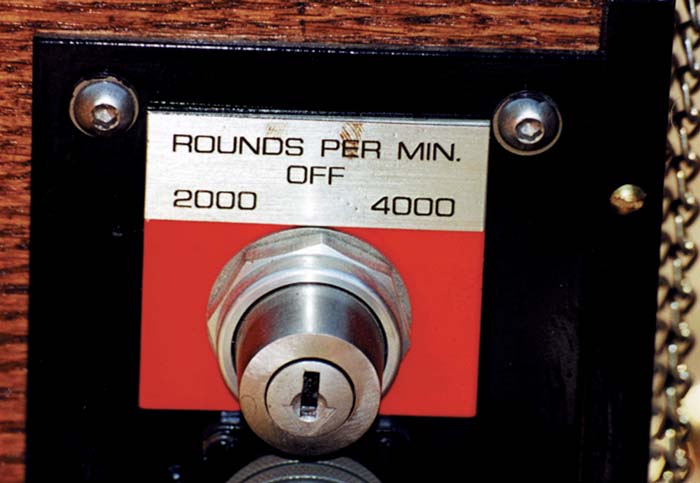
At the end of production, Dr. Gatling produced some electric powered models. Early on, he had searched for a substitute for hand cranking. In the fullness of time, the doctor devised a system of simple pulleys and wheels that drove the firing mechanism. These guns actually worked very well. Lack of reliable and available electric power proved their downfall. Battery technology struggled in its infancy. Few battlefields possessed convenient hook-ups for drop cords. As we fast forward more than a century, electricity presents no problem. This brings us to the craftsman Rich Pugsley and his thoroughly intriguing gun. Elsewhere in this issue, our writers will explain the technical marvels of the mini gun. The following tells of unique example. Rich Pugsley built what may be the most interesting “A ticket” ride at the Spring Knob Creek Shoot.
Mr. Pugsley’s Gun
As a Class 2 professional, Rich Pugsley felt naturally drawn to the mini gun. He wanted to build the end all of the Gatling gun while giving a nod to the genius of Dr. Gatling. Nothing could be more natural than a mini gun mounted on an authentic Gatling field chassis. Mr. Pugsley knew that the 1874 mount would need some modification to accommodate the modern gun. Rich stated that he spent a lot of chair time on this project. He laid out certain requirements for the gun, then thought long and hard about how best to achieve them. Rich wanted non-binding traverse, and a low center of gravity. He also wanted two-handed gunner control, and easy serviceability. Finally, Rich Pugsley wanted to give a nod to history. Rich concluded that the chassis held the key to all five goals.
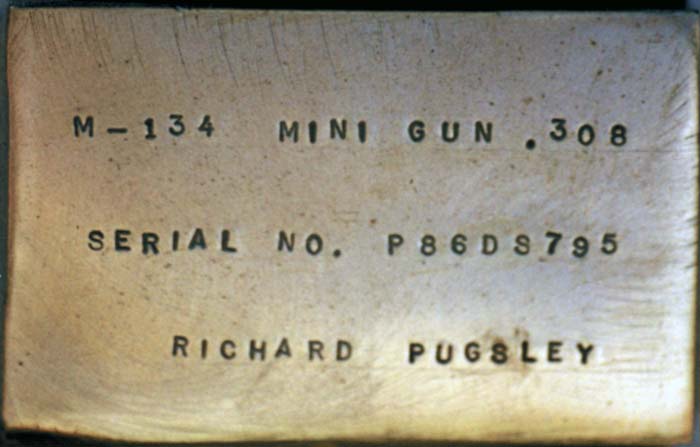
The chassis yoke presented him with an interesting challenge. This yoke determined the scale of the whole gun. On Dr. Gatling’s original chassis, the yoke held the gun with a box flanked on each side. These boxes, called ‘egg crates’, held stick magazines for the Gatling gun. Rich knew that he would mount the mini batteries and feeder in the boxes. He also knew that the steel braced yoke would traverse with the gun, thereby keeping the batteries and feeder aligned with the weapon. He determined the width of the yoke by establishing the size of the battery box. Rich went to Sears, where he measured two deep cycle marine batteries. He then added sufficient space for the electrical connections. These measurements established the dimensions of the battery box. He then fabricated the feeder box as an exact twin. This, coupled with the gun positioning, determined the width of the yoke. From the mini gun scaled yoke, all else followed.
Rich first lowered the center of gravity on the 1874 Gatling chassis. Though similar in appearance to the 1874 model, Rich’s mini gun chassis differs in dimension and slinging. The .308 mini gun’s needs dictated this difference. Rich dropped the center of gravity by re-configuring the 1874 chassis, and underslinging it. This arrangement afforded easy access to the yoke mounted mini gun. He then built a superstructure of hand fabricated, cold rolled steel. and covered the superstructure with hand polished oak. The rich hue and graceful lines of the underslung oak chassis mask the massive steel structure that nestles inside it. Rich then added a brass Gatling gun seat for the gunner. He sand cast all six parts for the seat. Rich then assembled and finished the six brass pieces into a single unit.
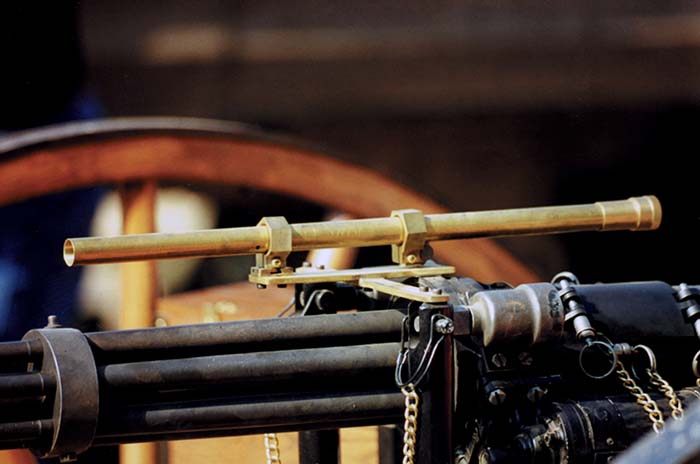
There is a fascinating story to the carriage. The dishing and outward cocking of the wheels was part of an 18th Century suspension system. The wheels mount solidly to the axles, and must flex slightly during travel. A rut or wide ditch would shatter wheels that stood perfectly straight. These wheels give slightly under high stress or heavy loads. On impact they flex and cushion the blows to the axles and hubs. The well-crafted wheels feature a one-piece steel rim around the wood filly, joined by a single weld. Their black patina sets off the beautifully crafted oak and hickory wheels.
Rich Pugsley takes no credit for the wheels. Instead, he turned to craftsmen who have fabricated circular works of art since the 18th Century. Rich generously gives both credit and praise to the Amish craftsmen at the Holmes Wheel Company in Holmesville, Ohio. Two men with the same last name have crafted wheels for him. One of these men built the huge wheels for Rich’s two inch Hotchkiss revolving cannon. Those who viewed this mammoth gun at the Spring 97 Knob Creek Shoot will verify that its scale deceives. Seen at a distance, the graceful lines of this behemoth belie its 3000 pound weight. The other man crafted the wheels for the Gatling mini. As the reader may view in the photographs, the Gatling mini’s wheels offer the same gentle lines. These wheels stand in sturdy tribute to the followers of Jacob Amman. Their fine lines give silent testament to the generational craftsmanship and abiding faith of the Amish people.
The Remembered Past
Until the very end of World War I, guns of rapid fire served as adjuncts to artillery. On first viewing the Gatling mini, I thought of two men from history that should have fired such a gun. I first thought of John Pelham, cannoneer of the Army of Northern Virginia. At Malvern Hill, Confederate units attacked massed Union guns before the arrival of sufficient artillery. John Pelham committed his Tredegars to the fray. Outgunned fifteen to one, he dueled the Union artillery until incoming fire disabled all of his guns. Among those on Pelham’s side of the field was Henry Burroughs Holliday, father of “Doc”, Holiday.
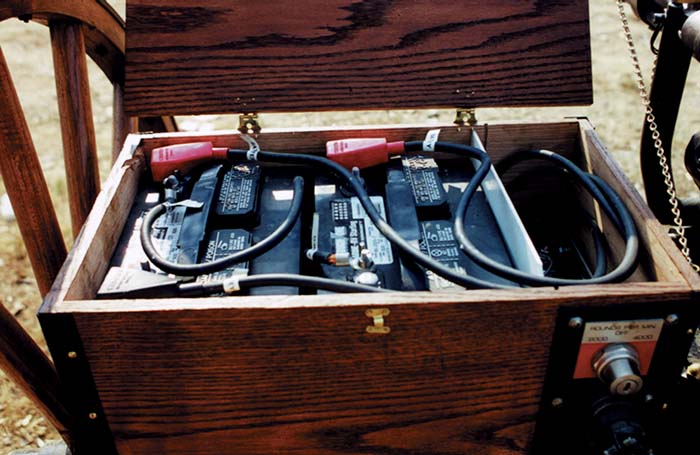
At Fredericksburg, John Pelham disobeyed orders and hauled his guns to a completely exposed position on Marie’s Ridge. From there, The Great Cannoneer poured fire into the advancing Union lines. Excellent shooting by Union artillerists disabled several of Pelham’s guns, but could not dissuade him. Only when he ran out of ammunition did Pelham pull back to the lines of Thomas Jackson. The Foot Cavalry of The Blue Eyed Killer cheered the daring young Pelham. Among those who cheered The Gallant Pelham was this writer’s great, great grandfather, John Adams Burroughs.
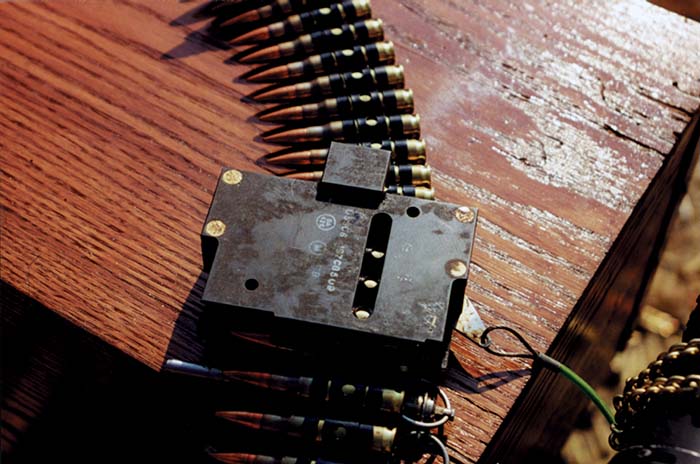
Another who cheered would become, during his long lifetime, one of Georgia’s most beloved and respected Confederate Veterans —William H. ‘Bill’ Yopp, a Black Confederate of the 14th GA. Bill Yopp now sleeps forever amongst his fellow Cavaliers in the Confederate Cemetery in Marietta, Georgia. Holliday, Burroughs, and Yopp would survive the war. They, like Pelham, gave their all to valiantly defend the Valley of The Daughter of the Stars. Unlike them, the Gallant Pelham would fall mortally wounded near The Daughter’s outstretched arms — March 17, 1863. Readers who have not studied Bob Lee’s boy cannoneer should know that others have, including Erwin Rommel. The “turned down” 88s in North Africa came from John Pelham.
I then thought of another brave soldier under Confederate command some three years before our current millennium. At the outbreak of the Spanish American War, President William McKinley called upon the unrepentant cavalryman “Fighting Joe Wheeler”. General Wheeler donned a blue uniform and did his duty. Theodore Roosevelt volunteered to serve under Leonard Wood in Wheeler’s Command. Teachers in the government schools label Theodore Roosevelt as a blue blood New Yorker from Sagamore Hill. As usual, that is only half true.
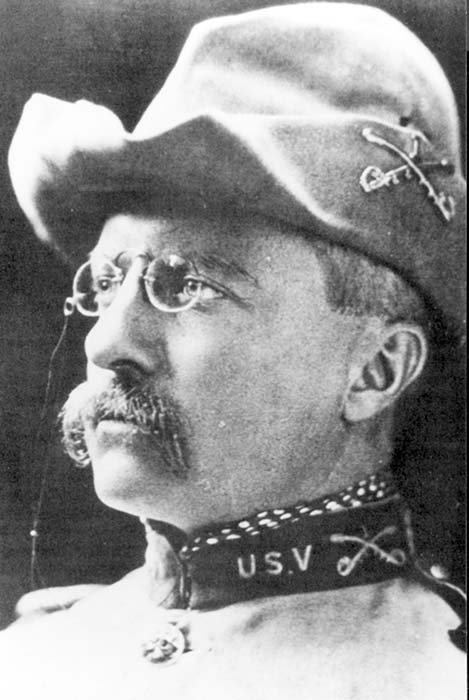
The other half of Roosevelt’s blue blood flows from Bulloch Hall in Roswell, Georgia. Margaret Mitchell would later use Bulloch Hall and TR’s mother Mitti Bulloch as inspiration in part for Tara and Scarlet. A contemporary described the President’s mother thusly,’beautiful as she was spirited and courageous’. TR’s beloved ‘Uncle Jimmy’ was none other than James Bulloch, London head of Confederate Secret Service. Jimmy Bulloch built the sloop of war C.S.S. Alabama under the noses of Union spies. He then smuggled her out of Liverpool. Bulloch’s younger brother Irvine served on Alabama’s decks. Another uncle made General at age twenty-six, with the Army of Northern Virginia. When Leonard Wood moved up in Cuba, Major General Wheeler made a fateful decision. General Wheeler handed the reins of the Rough Riders to Col. Roosevelt. Joe Wheeler did so because he knew Teddy Roosevelt to be a fighter and a leader of men. The Major General also knew from whence he came.
The Regular Army sent four 30-40 Krag chambered Gatling guns to 5th Army Corps in Tampa, Florida to aid the invasion of Cuba. These guns formed a battery under the direction of Lt. John Henry Parker, West Point Class of 1888. After landing, the Rough Riders and the black troopers of the 9th and 10th Cavalry set out to free the port of Santiago. John Parker muscled his guns over the same rough roads traveled by the dismounted cavalry units. John Parker’s Gatlings slowed down no one. Parker threw his Gatlings into the fray at both Kettle and San Juan Hills. At the Battle of San Juan Hill, his Gatlings raked the block house that overlooked the Americans and Santiago Bay.
So impressive was Parker’s covering fire during the foot charge up San Juan Hill that, throughout the rest of his life, he carried the name ‘Gatling Parker’. So dreaded were the black soldiers of the 9th and 10th Cavalry that the Spaniards called them ‘Shadow Yankees’. Their bravery under fire helped swing the tide of battle. Joe Wheeler found the black soldiers’ heroism completely unsurprising, having commanded an integrated unit during the War Between the States. After his service in Cuba, John Parker wrote two books on machine gun tactics, considered far ahead of their time. John Milius and Tom Berenger captured most of the above, and more, in their brilliant film ‘Rough Riders’-now available on video from Turner Network Television.
Had Gatling Parker a Rich Pugsley gun, Spanish buttons would have pinned themselves even closer to the ground. Perhaps Bucky O’Neil would have seen Prescott, Arizona once again. Perhaps he and others would have rejoiced in the new millennium. One finds history filled with what if and what was. That explains in part why we reach back to enhance the things of today. When Rich Pugsley built his gun, he reached back to our honored past. The finishing touches, as well as the carriage, come from history. These touches complement his mini gun that comes from the present.
The Finishing Touches
Rich Pugsley added a pair of angled M-16 pistol grips to the mini gun. These grips provide the gunner with two-hand control. These angled grips suggest the grips on the Jap 92 heavy machine gun. Rich then added the linnet to the tail piece. On an 1874 Gatling, the linnet attaches to the gun’s limber. Rich then added the windage pole socket. In the latter half of the 19th Century, gunners like Gatling Parker planted a pole in the socket. With a hefty lift, they could quickly shift the firing position of the gun.
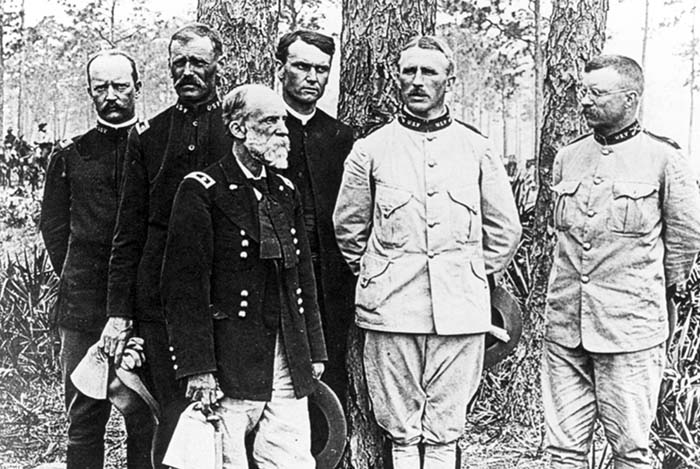
With all work done from the gun barrels down, Rich still wanted something extra to finish the Gatling mini. For his final touch, Mr. Pugsley consulted with Mr. Paul Reed of Navy Arms. From Mr. Reed, Rich secured a reproduction brass tube telescopic sight. Mr. Reed selected a sight featured on the Navy Arms distance rifles used in Cowboy Action Shooting. With the Navy Arms scope, Rich Pugsley’s Gatling mini became complete. This finished gun now stands as yet another example of the old style craftsmanship still practiced at the Thunder Valley Gatling Gun Company.
Dorothy, You’re Not In Kansas
he preceding tells of an intriguing gun, as interesting to view as it is to fire. In other magazines an article such as this would have slammed shut two sentences ago. Many readers probably abandon hope that they may ever view or touch such a gun. Despair not. Always remember that you are reading the Small Arms Review. Within these pages we try to provide the cure for what ails you. The following may offer just the medicine that you need.
Rich Pugsley vows to return to the Knob Creek Range. Mr. Pugsley and his gun will be counted present for the April ’98 Show and Shoot. At that shoot, as he did at the last one, Rich Pugsley will sell rides on the Gatling mini. For you, the reader, we offer simple instructions. Pack your ear and eye protection and head for Kentucky. Arrive at the Knob Creek Range on April 17 — 19, 1998. Belly up to the orange fence and watch the excitement. If you wish to sit on the brass seat and drive the Gatling mini, Mr. Pugsley will oblige you. Rich will seat you on the past and hand you the triggers of tomorrow. Bring a friend and a video camera to capture the moment. You should know that this “A ticket” will not be cheap. That being said, this writer remains confident that Rich Pugsley and the Gatling mini will give you one hell of ride.
Plaudits to Don Thomas for additional research. Kudos to Bulloch Hall, Harvard University, and Turner Network Television for their able assistance. The writer from Georgia sends thanks to the drummer from Texas, Gary Busey, for his portrayl of Joe Wheeler. Special thanks to my grandmother Kate Burroughs Cartledge (1888 — 1993) and her grandfather John Burroughs (1823 — 1911) of Burroughs Plantation, Madison County, Georgia from whom some of the above came.
Sources:
Rich Pugsley
Thunder Valley
Gatling Gun Co.
P.O. Box 97
Palmyra, NE 68418
402-828-4275
‘Rough Riders’ video
by Turner Network Television
1050 Techwood DR
Atlanta, GA 30318
1-800-523-0823
‘Mornings on Horseback’
TR book by David McCullough
Bulloch Hall
180 Bulloch AVE
Roswell, GA 30075
770-992-1731
‘The Gallant Pelham’
David Brady
Columbus Armory
1104 Broadway
Columbus, GA 31901
706-327-1424
Forgotten Confederates
Black Soldiers in Grey
by Kelly Barrow
P.O. Box 1314
Thomaston, GA 30286
706-648-4698
Paul Reed
Navy Arms Company
689 Bergen Blvd
Ridgefield, NJ 07657
201-945-2500
| This article first appeared in Small Arms Review V1N5 (February 1998) |



